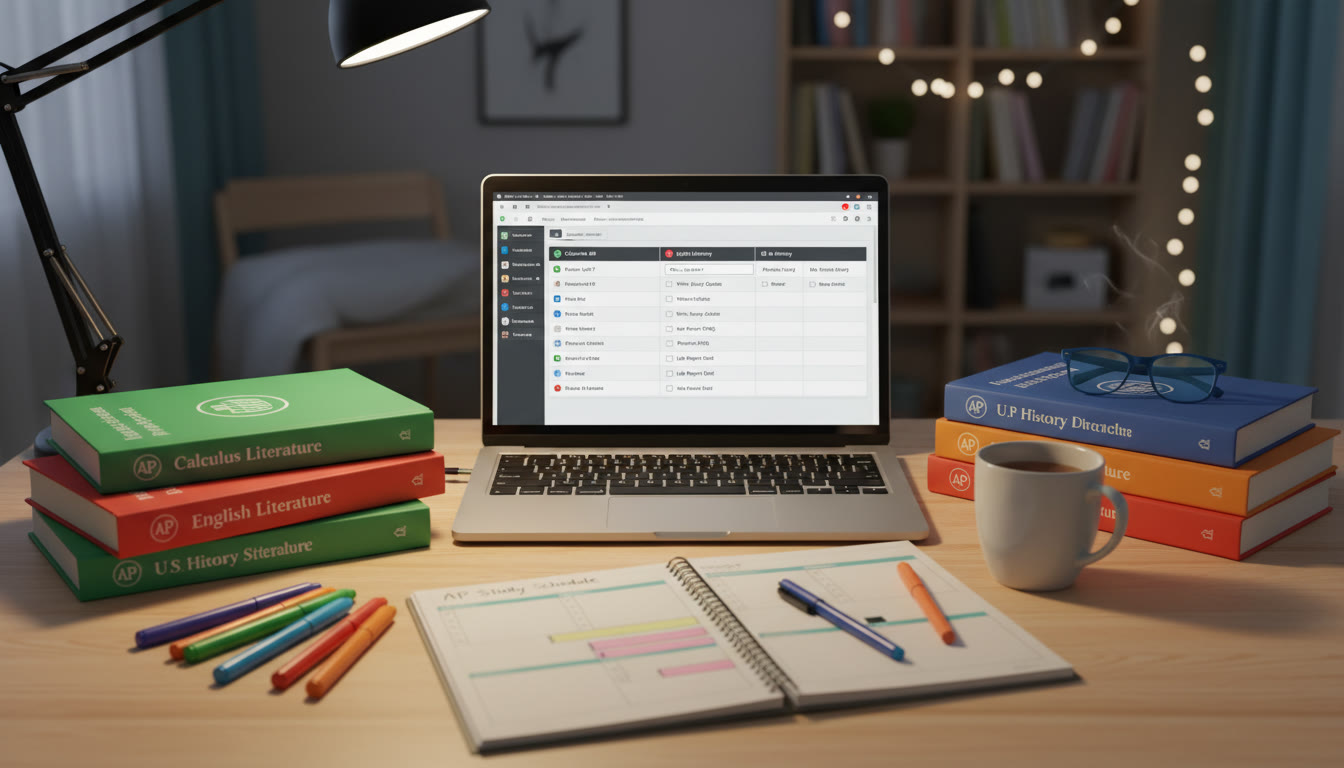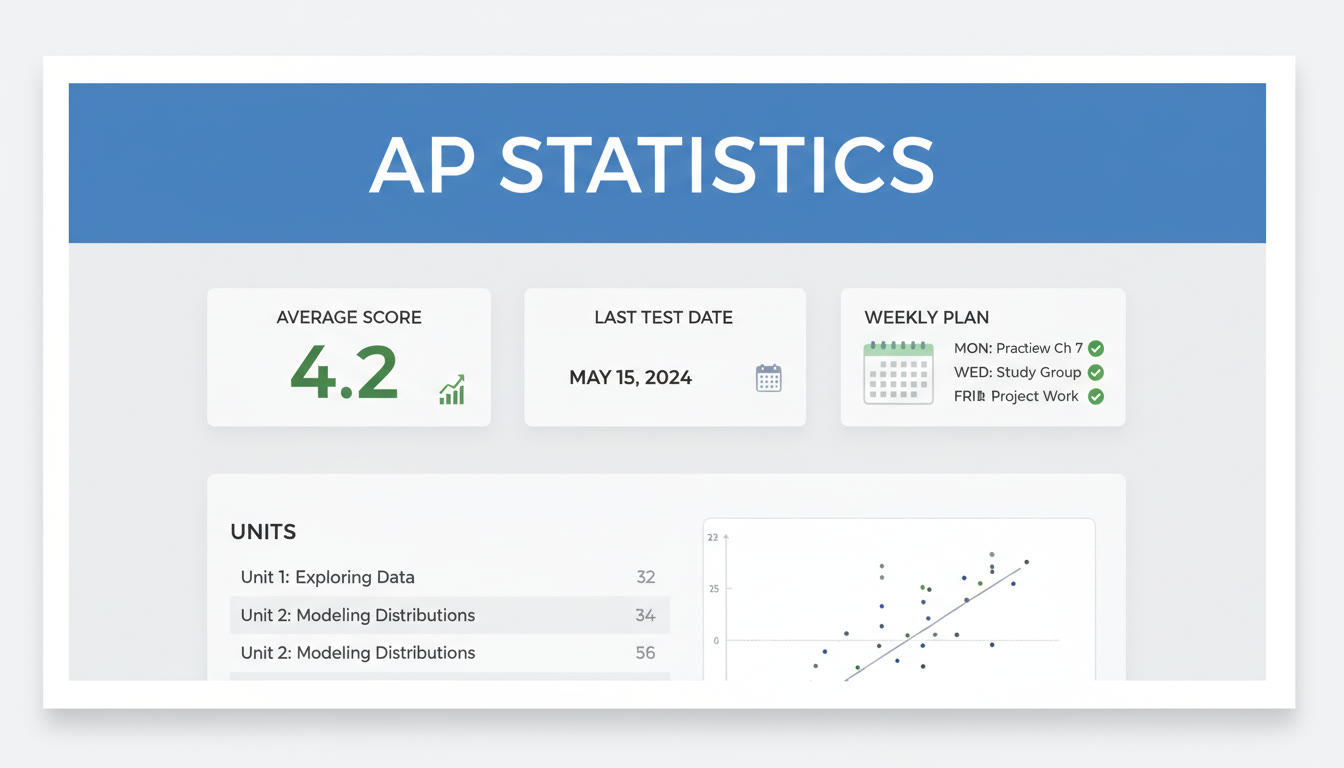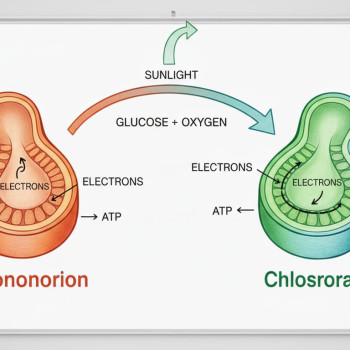Why Notion Is a Game-Changer for AP Students
If you’re juggling multiple AP classes, practice exams, projects, and the school-year avalanche of deadlines, Notion can feel like the calm in the storm. It’s not just another notes app — when you master databases, relations, and rollups in Notion, you build a system that thinks for you: automatically summarizing scores, surfacing weak units, and even producing weekly study agendas. This post walks you through practical, AP-focused ways to set up those building blocks, shows real examples, and gives you a plan you can adapt tonight.

Core Concepts — Databases, Relations, Rollups (Explained Like a Human)
Before we build, let’s establish the language. Think of Notion databases like flexible spreadsheets that can hold pages. Relations link databases together (like connecting a list of practice tests to the AP course they belong to). Rollups aggregate information across that link — for example, automatically calculating the average score from all practice tests for a single AP course.
Databases: More than Tables
Notion databases come in many views — tables, boards, lists, calendars, and galleries. For AP work you’ll usually use a combination: a Courses database for metadata about each AP class, an Assignments & Tests database for every quiz and practice exam, and a Revision Tasks database for bite-sized study items. Each database should be concise, with properties that capture the facts you’ll need later (date, topic, difficulty, estimated time, score, link to resources).
Relations: Connect the Dots
Relations are powerful because they let databases talk to one another. Link a test to its course; link revision tasks to specific learning objectives; link flashcard decks to chapters. With relations you stop duplicating information. Instead of retyping “AP Biology” on every practice test entry, you relate the test to the AP Biology record and pull metadata as needed.
Rollups: Let Notion Do the Math
Rollups take a related field and compute something from it: averages, counts, last modified, min/max, etc. Want to know your average on all AP US History practice tests? Create a rollup on the AP US History course that pulls the “Score” property from all related tests and finds the average. Want to know how many practice problems remain tagged “weak” for a course this week? Use a rollup combined with a formula to surface that number on your course card.
Build a Practical AP Dashboard — Step-by-Step
Below is a simple but robust architecture you can copy and tweak. I’ll describe each database and key properties, then show how relations and rollups tie everything together.
Databases You’ll Want
- Courses — one entry per AP class you take (AP Calculus AB, AP Literature, etc.).
- Assessments — practice tests, quizzes, timed sections, and formal exams.
- Study Tasks — micro-tasks like “Review Unit 3 formulas” or “15 flashcards: DNA”.
- Resources — links to videos, past exams, textbook chapters, flashcard decks.
- Calendar / Weekly Plan — a view that pulls calendar-dated tasks for a week-at-a-glance schedule.
Key Properties to Add
- Course database: Course Name, Exam Date, Weight (how important to you), Contact (teacher), Average Practice Score (rollup).
- Assessments: Title, Date, Type (Practice Test, Quiz, FRQ Session), Related Course (relation), Score (number), Time Spent, Confidence (select low/medium/high).
- Study Tasks: Task Name, Related Course (relation), Topic/LO (learning objective), Priority, Estimated Time, Due Date, Status.
- Resources: Title, Type (Video, Past Exam, Guide), Related Course (relation), Tags.
Creating Relations and Rollups
1) In Assessments, add a Relation property that links to Courses (call it Related Course). 2) In Courses, add a Rollup property that looks at the Assessments relation and pulls the Score property. Set the rollup to calculate the average, or the latest score, or both. 3) Add a count rollup in Courses that counts assessments in the past 30 days so you can see practice frequency at-a-glance.
Real AP Use Cases — Concrete Examples
Concepts stick when tied to problems you actually face. Below are scenarios AP students often meet and how to solve them with Notion.
1) Track Practice Test Progress Across Multiple APs
Problem: You take full-length practice tests in different subjects, but lose track of which test was strongest or which subject needs the most work.
Solution: Log every practice test in Assessments with Date, Time, Section Scores (you can add properties for Section 1, Section 2), and a relation to Courses. Then, on each Course page, add rollups showing: average overall score, last test date, and count of tests in the last month. Use a formula to flag if the rolling average is below a threshold (for instance, < 65% shows "Needs Work").
2) Build a Weekly Study Plan Automatically
Problem: Your calendar fills up but your study time feels aimless.
Solution: Create a Calendar view of the Study Tasks database. For recurring study habits, create template tasks (e.g., “15 min FRQ review” tied to AP Physics) and duplicate them for each week. Use Rollups on Courses to show “Weak Topics Count” pulled from Study Tasks where Status is “Not Mastered”. That way your weekly view surfaces the tasks connected to your weakest topics.
3) Prioritize the Right Content — Not Just the Fun Stuff
Problem: You gravitate toward what’s comfortable (flashcards, for example) instead of what will raise your score fastest (timed FRQs, problem sets).
Solution: Use a Priority property in Study Tasks (High/Medium/Low) and an Estimated Impact formula: Impact = Priority Weight * Time Spent * (1 if topic is tagged “Weak”). Create a rollup on Courses that sums Estimated Impact for outstanding tasks to show which course will yield the biggest score increase per hour invested.
Table — Example Schema Snapshot
| Database | Essential Properties | Useful Rollups/Calculations |
|---|---|---|
| Courses | Name, Exam Date, Teacher, Weight | Average Practice Score, Tests Count (30d), Weak Topics Count |
| Assessments | Title, Date, Type, Related Course, Score, Time Spent | Latest Score, Section Averages |
| Study Tasks | Task Name, Related Course, Topic, Priority, Time, Due Date, Status | Sum Estimated Time, Count of High Priority Tasks |
| Resources | Title, Type, Related Course, Tags | Times Used (rollup from Study Tasks) |
Advanced Tricks — Formulas, Conditional Rollups, and Templates
Once you have relations and rollups working, a few advanced touches make the system feel magical.
Use Formulas to Create Actionable Flags
Formulas can combine rollups and properties to produce readable status labels: “On Track,” “Catch Up,” or “Intensive Review.” Example formula logic: If(examDate – now() < 14 days and avgScore < 70, “Intensive Review”, If(avgScore < 70, “Catch Up”, “On Track”)). Add this as a Property on your Course pages to inform daily decisions.
Conditional Rollups with Filtered Relations
Notion allows rollups to respect filters on relations. You can have a rollup that only considers assessments labeled “Timed” or only study tasks due this week. That makes metrics like “This Week’s Weak Topics” accurate and actionable without manual counting.
Templates to Standardize Logging
Create templates for common entries: a Practice Test template that prompts you to fill section-level scores, notes, and confidence levels; or an FRQ Review template that includes a checklist for common mistakes. Templates ensure consistent data — and data is what makes rollups useful.

Study Flow Examples — Daily, Weekly, and Pre-Exam
How you use Notion changes depending on the rhythm of your school year. Here are three reproducible workflows.
Daily: Quick Morning Check (5–10 minutes)
- Open your AP Dashboard. Check “Today” calendar view for scheduled Study Tasks.
- Look at course flags: any course labeled “Intensive Review” deserves first attention.
- Pick one focused task (25–50 minute block) and one small win (15–20 minutes) to finish before dinner.
Weekly: Planning Session (20–40 minutes)
- Run the Assessments rollups to see practice frequency and score trends.
- Update Study Tasks — create tasks for weak topics flagged by rollups.
- Assign tasks into the Calendar view for the week and estimate time. Prioritize high-impact tasks.
Pre-Exam: 2–3 Weeks Out
- Switch to a focused study schedule: convert high-priority Study Tasks into timed sessions and block them on your calendar.
- Use Assessments to log any timed section practice. Add a “Confidence” property and track whether confidence changes as you repeat timed practice.
- Create a “Final Checklist” template on the Course page summarizing formula sheets, common mistakes, and the last 10 FRQs you must review.
Personalize It — Make the System Your Own
No single setup fits every student. The best Notion systems are flexible: they track the few numbers that actually change behavior for you. If you’re an FRQ-heavy subject like AP English or AP History, build more detailed Assessments with rubric-based scores. If you’re concrete—like AP Calculus—track specific problem types (integral by parts, related rates) as tags on Study Tasks.
When to Keep It Simple
If you’re new to Notion, start with three databases: Courses, Assessments, Study Tasks. Spend a week logging everything. Once you consistently add entries, add relations and rollups. Complexity is only useful if you keep data fresh.
How Sparkl’s Personalized Tutoring Can Fit Into Your Notion System
Using Notion doesn’t mean you study alone. A tutor who sees your Notion data can make better decisions faster — and that’s where targeted, personalized tutoring becomes powerful. Sparkl’s personalized tutoring offers 1-on-1 guidance, tailored study plans, expert tutors, and AI-driven insights that pair well with a Notion dashboard. For example, a Sparkl tutor could:
- Review your rollup metrics and recommend specific high-impact tasks.
- Create targeted templates for practice sessions that you then log into Notion.
- Help you interpret trends (e.g., why calculus section scores dip on integrals) and set micro-goals to fix them.
When tutoring is synchronized with your Notion system, you turn static notes into a feedback loop: practice, log, analyze, improve.
Troubleshooting Common Issues
Even smart students hit snags. Here are answers to common hurdles.
My rollups show empty values — what’s wrong?
Check that the relation is correctly set on the child database (Assessments). If the Assessments entry isn’t linked to a Course page, the rollup can’t find values. Also verify the property you’re rolling up (Score) is numeric and not text.
I’m overwhelmed by templates and tasks — how to simplify?
Delete or archive templates you don’t use. Replace multi-field tasks with a single task + checklist. Use filters to show only today’s tasks; hide everything else.
How do I keep the habit of logging?
Make logging quick: set up keyboard shortcuts, create a default Assessment template, and do a 3-minute end-of-study routine where you log score and a one-line note. Incentivize it: if you log consistently for a week, treat yourself to a small reward.
Checklist: Build This in One Afternoon
- Create Courses, Assessments, Study Tasks, Resources databases.
- Add relation from Assessments to Courses; create rollups (Average Score, Last Test Date).
- Make a Study Task template and a Practice Test template.
- Set up a calendar view for Study Tasks and a board view for Assessments by Type.
- Create one useful formula: Course Status = On Track / Catch Up / Intensive Review.
- Schedule a 20-minute weekly review in your calendar to keep data fresh.
Final Thoughts — Make Notion Work for Your Exam Goals
Notion gives you the scaffolding. Databases capture the raw fuel (practice tests, study tasks). Relations connect the fuel to your goals (courses, topics). Rollups turn noise into signal (averages, counts, trends). But the true power comes when you close the loop: practice, log, review, and iterate. Keep the system honest by logging consistently and letting rollups point out what matters.
Start small, and grow the system around how you actually study. Whether you’re two months out from AP exams or still in the first semester, a well-designed Notion workspace will save time, reduce stress, and help you study with clarity. And when you combine that workspace with a tutor who understands your data — someone offering tailored plans, 1-on-1 guidance, and feedback like Sparkl’s personalized tutoring — you amplify every hour you spend studying. Go build the dashboard, log your first practice test tonight, and let the data show you the next best step.
Want a Starter Template?
Here’s a tiny blueprint to copy into Notion: Courses (Name, Exam Date), Assessments (Title, Date, Related Course, Score), Study Tasks (Name, Related Course, Priority, Due Date). Link them, add one rollup to show average score per course, and you have a study system that already tells you what to do next.
Good luck — and remember, mastery is a process, not a single test day. Use tools to shorten that path, and let thoughtful practice do the rest.




















No Comments
Leave a comment Cancel